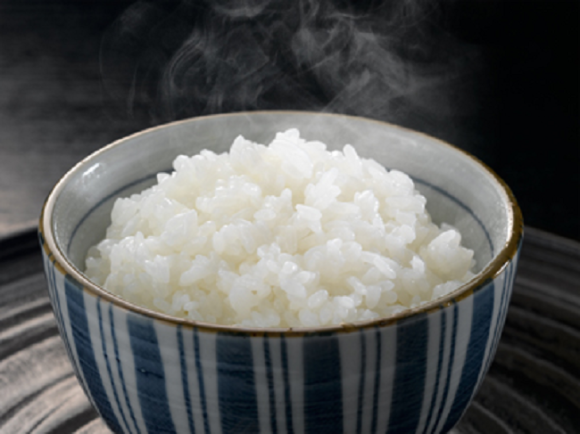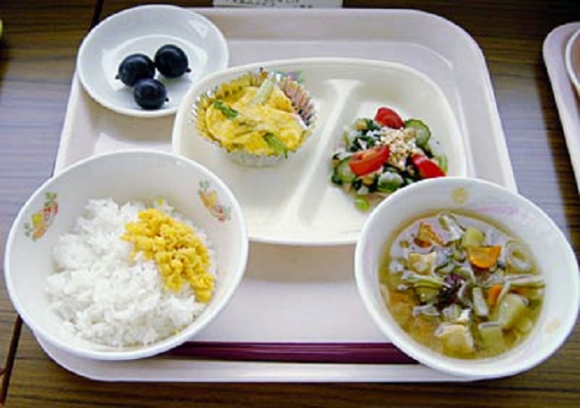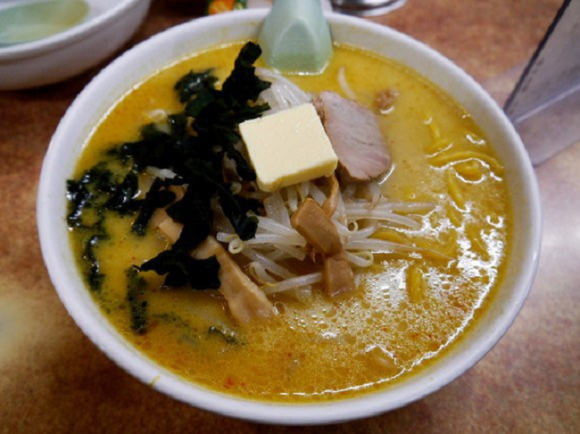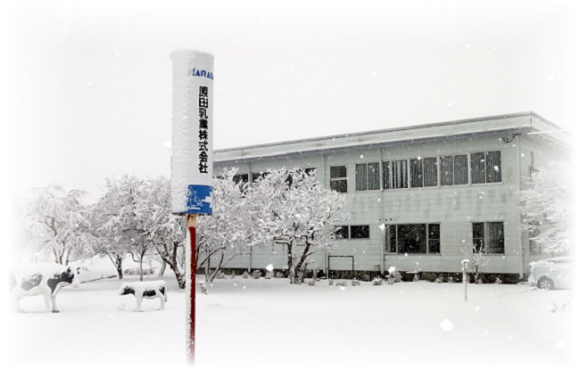I’ve lost count of the number of Japanese people I’ve met who were disappointed to find out I don’t have what they consider quintessential American eating habits. The last time I had a steak was a year ago. I’m perfectly happy eating rice, and I love fish, since, you know, I grew up in California, which is a coastal state (same ocean as Japan has, too).
But there’s one stereotype I do conform with, and that’s how much I love milk, despite being a full-grown adult. Many Japanese people, on the other hand, associate the drink with their childhood, since it’s been served in elementary schools for decades.
One city in Niigata Prefecture, though, has decided it has no more tolerance for drinkable lactose, and starting this month, is removing milk from its school lunches.
While a corner of unused agricultural land anywhere in the country is a prime candidate for being turned into a rice paddy, Niigata is especially fond of Japan’s favorite grain. Not only is the prefecture Japan’s second largest producer of rice, its flavor is highly praised, especially the strain known as Koshihikari.
▼ That’s some nice rice.
Figuring if they were surrounded by so many high-quality crops, they may as well use them, six years ago the elementary schools of Niigata’s Sanjo City reevaluated their school lunches, eventually deciding to phase out breads and noodles, and replace them with locally grown rice. Along with this switch came an increased focus on Japanese-style dishes and sides, such as fish, stewed meats and vegetables, and miso coup.
▼ A Sanjo school lunch
We’ll admit, that sounds a lot more gourmet than tater tots and chicken nuggets. But while parents seem generally pleased with what their kids have been eating at school for the past six years, some of them have been complaining about what their kids have been drinking: milk.
The issue doesn’t seem to be so much that parents think milk itself is bad for kids. It simply doesn’t go well with the flavor of Japanese food, says the most vocal group opposing milk in school lunches.
Enough members of the Sanjo Board of Education agreed that on December 1, the 30 city-run elementary schools in the town have stopped distributing packs of milk with students’ lunches. Currently, it’s only a temporary, four-month initiative, set to end with the Japanese school year next spring. Depending on the results of the trial period, however, the board may decide to make the switch permanent.
Although most of the lunch entrees are Japanese, some, such as pork cutlet and Szechuan-style pork, originate in western or Chinese cooking. Almost all are served with miso soup, though, which was singled out by some parents as an especially odd thing to pair with milk.
▼ We’re guessing they’ve never tried miso curry milk ramen.
Strangely enough, while some are against serving milk because they don’t think it’s an enjoyable compliment to the meal, others are worried about kids drinking too much milk with their Japanese-style food. Each pack contains 200 milliliters (6.8 ounces) of milk, and the anti-dairy camp says that’s space in the children’s stomachs that would be better occupied by bigger portions of nutritious rice or entrees.
That stance is a bit simplistic, though, because it assumes that milk doesn’t have any nutritional value. Most prominently, it’s a fantastic source of calcium, and several nutritionists are worried about Sanjo’s new school lunches contributing to deficiencies among pupils. They cite the importance of calcium in warding off conditions such as osteoporosis, and point out that it’s vital during childhood, as a lack of the nutrient can result in poor bone density, a serious problem that can be difficult to address after finishing puberty.
The Japan Dietetic Association is also backing milk advocates. In a statement, the organization emphasized that many children don’t receive sufficient amounts of calcium in the diets at home, and that school lunch milk plays a vital role in addressing this problem.
Traditional Japanese cuisine is healthy in many ways, but pretty calcium-poor, which is why my host dad used to encourage me to eat fish bones.
In response, the Board of Education is considering a number of countermeasures. The simplest ideas are to just serve more food each day, or to designate a day of the week in which the children are given meals that contain extra high quantities of protein or calcium. There’s also what would probably be the kid-pleasing proposal of having the kids make and eat dairy-based desserts once a week, but once you weigh the negatives of eating sweets against the positives of getting more calcium, nutritionally, it’s kind of a wash.
Although if our schools had taught it, you can bet our favorite subject would have been “cake.”
There’s one more positive those in favor of getting rid of milk permanently point to. Earlier this year, Japan’s consumption tax jumped from five to eight percent, meaning just about everything in the country suddenly got more expensive. Sanjo budgets 250 yen (US $2.20) for its elementary school lunches, and a pack of milk eats up one fifth of that amount. We’re not sure how the savings from cutting out milk offset against the potential extra costs from increasing the portions of rice and other foods, but still, having an extra 50 yen to work with is, taken strictly by itself, a good thing.
Unless, of course, you were counting on that 50 yen per student to keep your business going. Niigata’s Harada Milk was founded in 1887, and has been a major supplier to Sanjo’s elementary schools, previously providing 8,000 packs a day. Multiplied out over the course of four months of school, the company expects to lose some 22 million yen (US $191,000) of revenue as a result of the new lunch policy.
▼ It looks like Harada Milk and its employees are in for a long, cold winter.
President Haruo Harada is hoping milk makes a return to Sanjo schools once the test period is over. “Both dairy farmers and milk processors rely on the demand from school lunches to keep their doors open,” he said.
Right now, the kids themselves seem divided over how they feel about not having any milk. Some who didn’t care for it are glad to see it gone, while others have expressed hope that it comes back soon, especially since some schools have reportedly offered absolutely nothing as a beverage in exchange.
Either way, though, Sanjo’s schools are milk-free until the spring, at least. In the meantime, if Harada or any other dairy farmers are looking for new business opportunities, we could really use some butter.
Source: Naver Matome
Insert images: Niigata Kankou, Kenoh, RocketNews24, Harada Milk





 Hi-Chew releases new Japanese School Lunch flavor to stimulate appetites and nostalgia
Hi-Chew releases new Japanese School Lunch flavor to stimulate appetites and nostalgia We dig into Japanese ice cream flavored with iron metal and are wowed by the result【Taste Test】
We dig into Japanese ice cream flavored with iron metal and are wowed by the result【Taste Test】 Get a taste of Japan’s past NOW, with these retro snacks and sweets at Tokyo department store
Get a taste of Japan’s past NOW, with these retro snacks and sweets at Tokyo department store Japanese government calling on citizens to drink more milk…again
Japanese government calling on citizens to drink more milk…again Japanese wife berates husband for eating rice and side dishes together
Japanese wife berates husband for eating rice and side dishes together McDonald’s new Happy Meals offer up cute and practical Sanrio lifestyle goods
McDonald’s new Happy Meals offer up cute and practical Sanrio lifestyle goods All-you-can-drink Starbucks and amazing views part of Tokyo’s new 170 meter-high sky lounge
All-you-can-drink Starbucks and amazing views part of Tokyo’s new 170 meter-high sky lounge Super Nintendo World expansion gets delayed for several months at Universal Studios Japan
Super Nintendo World expansion gets delayed for several months at Universal Studios Japan McDonald’s Japan releases a pancake pie for new retro kissaten coffeeshop series
McDonald’s Japan releases a pancake pie for new retro kissaten coffeeshop series More foreign tourists than ever before in history visited Japan last month
More foreign tourists than ever before in history visited Japan last month Beautiful Sailor Moon manhole cover coasters being given out for free by Tokyo tourist center
Beautiful Sailor Moon manhole cover coasters being given out for free by Tokyo tourist center Disney princesses get official manga makeovers for Manga Princess Cafe opening in Tokyo
Disney princesses get official manga makeovers for Manga Princess Cafe opening in Tokyo Studio Ghibli releases new action figures featuring Nausicaä of the Valley of the Wind characters
Studio Ghibli releases new action figures featuring Nausicaä of the Valley of the Wind characters Studio Ghibli glasses cases let anime characters keep an eye on your spectacles
Studio Ghibli glasses cases let anime characters keep an eye on your spectacles The three ways to say “love” in Japanese, and when to use them
The three ways to say “love” in Japanese, and when to use them Starbucks reopens at Shibuya Scramble Crossing with new look and design concept
Starbucks reopens at Shibuya Scramble Crossing with new look and design concept Beautiful new Final Fantasy T-shirt collection on the way from Uniqlo【Photos】
Beautiful new Final Fantasy T-shirt collection on the way from Uniqlo【Photos】 Is the new Shinkansen Train Desk ticket worth it?
Is the new Shinkansen Train Desk ticket worth it? Foreign English teachers in Japan pick their favorite Japanese-language phrases【Survey】
Foreign English teachers in Japan pick their favorite Japanese-language phrases【Survey】 Japanese convenience store packs a whole bento into an onigiri rice ball
Japanese convenience store packs a whole bento into an onigiri rice ball We try out “Chan Ramen”, an underground type of ramen popular in the ramen community
We try out “Chan Ramen”, an underground type of ramen popular in the ramen community Studio Ghibli releases Kiki’s Delivery Service chocolate cake pouches in Japan
Studio Ghibli releases Kiki’s Delivery Service chocolate cake pouches in Japan Japan’s bone-breaking and record-breaking roller coaster is permanently shutting down
Japan’s bone-breaking and record-breaking roller coaster is permanently shutting down New definition of “Japanese whiskey” goes into effect to prevent fakes from fooling overseas buyers
New definition of “Japanese whiskey” goes into effect to prevent fakes from fooling overseas buyers Our Japanese reporter visits Costco in the U.S., finds super American and very Japanese things
Our Japanese reporter visits Costco in the U.S., finds super American and very Japanese things Studio Ghibli unveils Mother’s Day gift set that captures the love in My Neighbour Totoro
Studio Ghibli unveils Mother’s Day gift set that captures the love in My Neighbour Totoro Foreign passenger shoves conductor on one of the last full runs for Japan’s Thunderbird train
Foreign passenger shoves conductor on one of the last full runs for Japan’s Thunderbird train Domino’s Japan now sells…pizza ears?
Domino’s Japan now sells…pizza ears? New Japanese KitKat flavour stars Sanrio characters, including Hello Kitty
New Japanese KitKat flavour stars Sanrio characters, including Hello Kitty Kyoto creates new for-tourist buses to address overtourism with higher prices, faster rides
Kyoto creates new for-tourist buses to address overtourism with higher prices, faster rides Sales of Japan’s most convenient train ticket/shopping payment cards suspended indefinitely
Sales of Japan’s most convenient train ticket/shopping payment cards suspended indefinitely Sold-out Studio Ghibli desktop humidifiers are back so Totoro can help you through the dry season
Sold-out Studio Ghibli desktop humidifiers are back so Totoro can help you through the dry season Japanese government to make first change to romanization spelling rules since the 1950s
Japanese government to make first change to romanization spelling rules since the 1950s Ghibli founders Toshio Suzuki and Hayao Miyazaki contribute to Japanese whisky Totoro label design
Ghibli founders Toshio Suzuki and Hayao Miyazaki contribute to Japanese whisky Totoro label design Doraemon found buried at sea as scene from 1993 anime becomes real life【Photos】
Doraemon found buried at sea as scene from 1993 anime becomes real life【Photos】 Tokyo’s most famous Starbucks is closed
Tokyo’s most famous Starbucks is closed One Piece characters’ nationalities revealed, but fans have mixed opinions
One Piece characters’ nationalities revealed, but fans have mixed opinions We asked a Uniqlo employee what four things we should buy and their suggestions didn’t disappoint
We asked a Uniqlo employee what four things we should buy and their suggestions didn’t disappoint Princesses, fruits, and blacksmiths: Study reveals the 30 most unusual family names in Japan
Princesses, fruits, and blacksmiths: Study reveals the 30 most unusual family names in Japan How to make cheese with just three ingredients【SoraKitchen】
How to make cheese with just three ingredients【SoraKitchen】 We try Japan’s new Starbucks Frappuccino with first-ever almond milk whipped cream
We try Japan’s new Starbucks Frappuccino with first-ever almond milk whipped cream “Let them eat furikake!” says Mayor Hashimoto as Osaka school lunch saga rumbles on
“Let them eat furikake!” says Mayor Hashimoto as Osaka school lunch saga rumbles on Why are some Japanese preschools banning awesome, adorable character bento?
Why are some Japanese preschools banning awesome, adorable character bento? Is ramen pizza just crazy enough to work? Japanese restaurant’s unusual menu lets us find out
Is ramen pizza just crazy enough to work? Japanese restaurant’s unusual menu lets us find out Cute and comfy women’s-only hotel in Kyoto has everything you need for the perfect girls’ trip
Cute and comfy women’s-only hotel in Kyoto has everything you need for the perfect girls’ trip Starbucks Sakura Frappuccino blooms in Japan 【Taste Test】
Starbucks Sakura Frappuccino blooms in Japan 【Taste Test】 Curry restaurants across Japan create social media movement: “Don’t blame the curry!”
Curry restaurants across Japan create social media movement: “Don’t blame the curry!” Study of blood tests in Tokyo finds 98% as having vitamin D deficiencies
Study of blood tests in Tokyo finds 98% as having vitamin D deficiencies Turn a persimmon into a pudding with one simple ingredient
Turn a persimmon into a pudding with one simple ingredient Japanese Twitter users share a secret hiding on platform five at Akihabara Station
Japanese Twitter users share a secret hiding on platform five at Akihabara Station Georgia Coffee releases a brand new banana-flavored version of its Hokkaido-only Milk Coffee
Georgia Coffee releases a brand new banana-flavored version of its Hokkaido-only Milk Coffee We turn Japanese soymilk into a refreshing summer treat in just two steps【SoraKitchen】
We turn Japanese soymilk into a refreshing summer treat in just two steps【SoraKitchen】 Japan’s newest Shinkansen is world’s fastest gallery, packed with contemporary art inside and out
Japan’s newest Shinkansen is world’s fastest gallery, packed with contemporary art inside and out
Leave a Reply